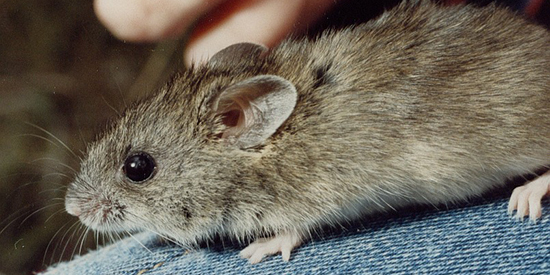New Holland mouse disappears from Otways, ecologist warns of extinction
Media releaseA severely endangered native mouse species known for its historical and environmental significance has disappeared from its home range in Victoria's eastern Otways, according to a new Deakin University study.
The New Holland mouse was first "described" by renowned naturalist George Robert Waterhouse - a close collaborator of Charles Darwin - in 1843, before being unrecorded and then rediscovered in New South Wales, more than a century later.
Populations of the species had since been monitored around the Great Otway National Park and Anglesea Heath up until 2003.
But ecologist Associate Professor Barbara Wilson, who has been working on the ecology and reproduction of the native animal since 1981, said recent surveys to monitor New Holland mice in the area had failed to record any.
Over the past four years (2013 to 2017) Associate Professor Wilson and her colleagues in Deakin's School of Life and Environmental Sciences have been monitoring 42 sites across the eastern Otways.
But while their traps and cameras have captured many other native species, they have not captured any of the endangered New Holland mice.
"This leads us to believe that the New Holland mouse is most probably extinct from this habitat, something we did not expect to find," Associate Professor Wilson said.
"It's now likely that the only way we will see a return of this species to the Otways is through a reintroduction program, but that must be supported by habitat protection, predator control and appropriate fire management if it is going to be effective."
The New Holland mouse looks very similar to the common house mouse, which was introduced to Australia by European settlers and is no genetic relation. But the native species can be differentiated by its slightly larger ears and eyes, and also lacks a distinctive "mousy" odour.
It lives in coastal woodland and sand dunes. In the past, there have been small populations recorded in the south-eastern states - Tasmania, Victoria, New South Wales and Queensland.
Associate Professor Wilson said in Victoria small populations have recently been recorded at Wilson's Promontory, Dutson Downs and Providence Ponds, but many other populations have gone extinct, including in Tasmania.
"In the Otways we had eight populations we studied, they were small and localised but some were high density populations, especially after high rainfall," she said.
"Unfortunately when rainfall declined, the species declined."
Associate Professor Wilson said the effects of climate change and resulting reductions in rainfall were a big threat to native species.
"Our recent survey also showed potential threats to the New Holland mouse were from historic clearing of land and habitat fragmentation, inappropriate fire regimes, introduced predators and human impacts (e.g. horse riding and off-leash dogs)," she said.
Associate Professor Wilson said it was critical the species was protected.
"Of Australia’s 49 conilurine rodent species - the group to which the New Holland mouse belongs - eight are extinct and 35 are in decline," she said.
"Unfortunately there's not much monitoring of this kind of species, the money and public concern mostly flows to the bigger iconic mammals like koalas and numbats.
"A lot of the public don't know we have native rodents, so we want to open up people's minds to the small but significant species we have.
"There needs to be more resources put into regular monitoring of any wildlife listed as threatened."
Associate Professor Wilson's paper 'Long-term fluctuations in distribution and populations of a threatened rodent Pseudomys novaehollandiae in coastal woodlands of the Otway Ranges, Victoria: a regional decline or extinction?' was published in the journal Australian Mammalogy today.

